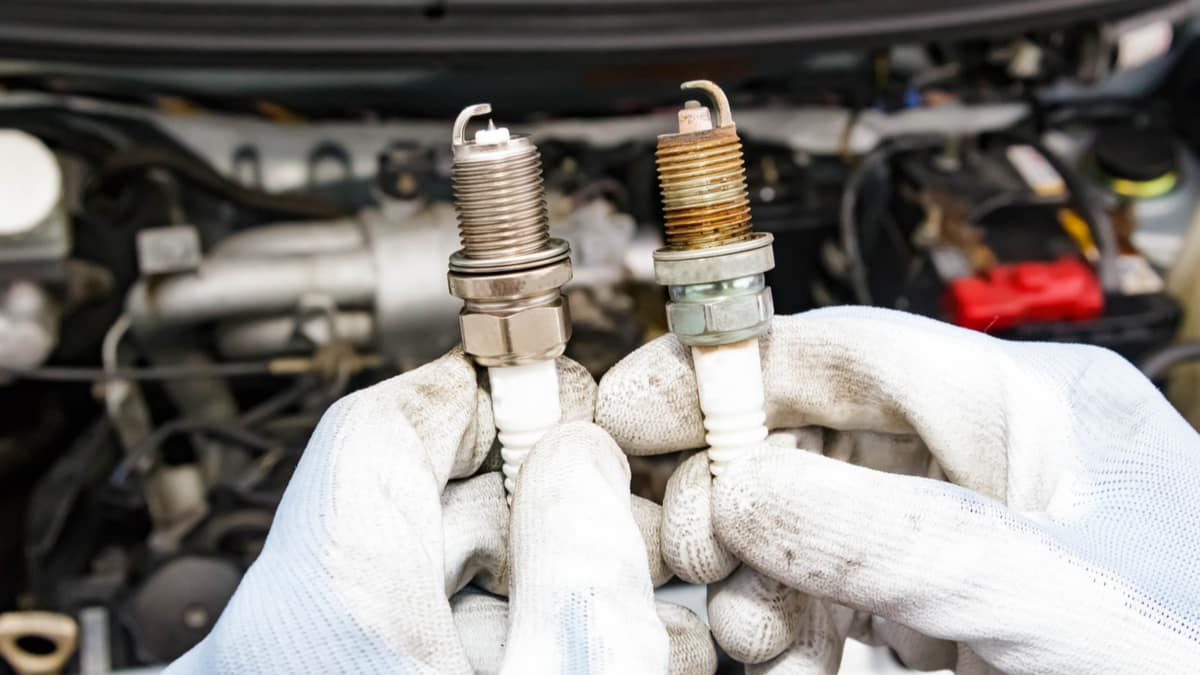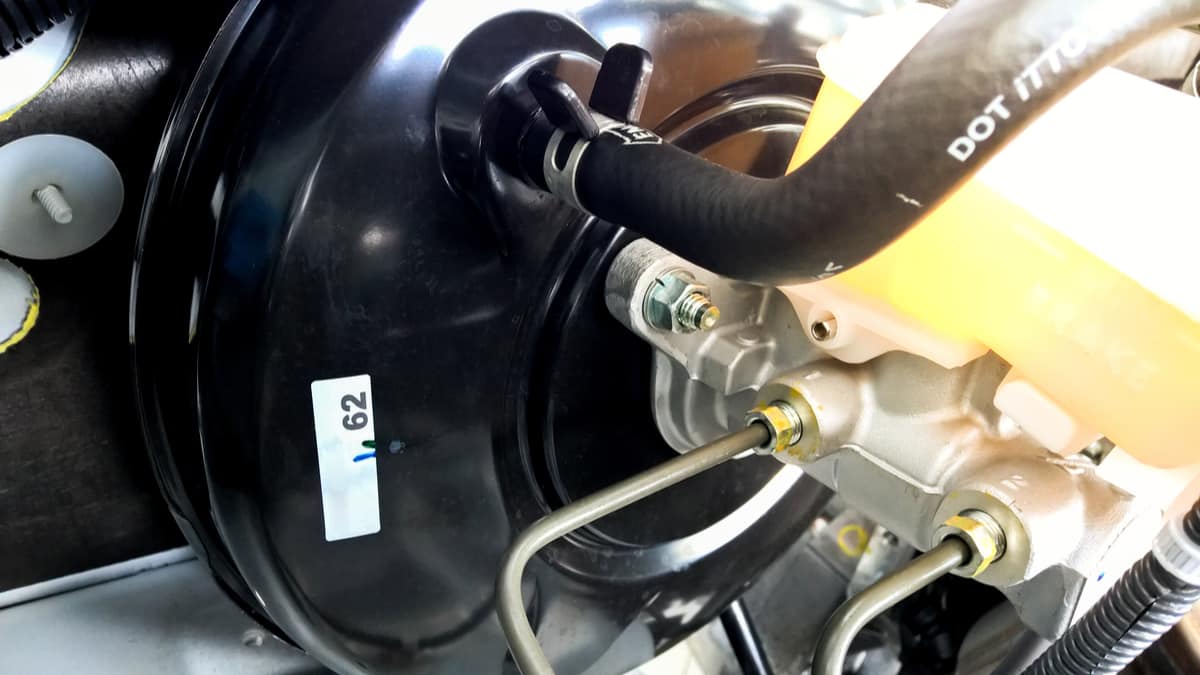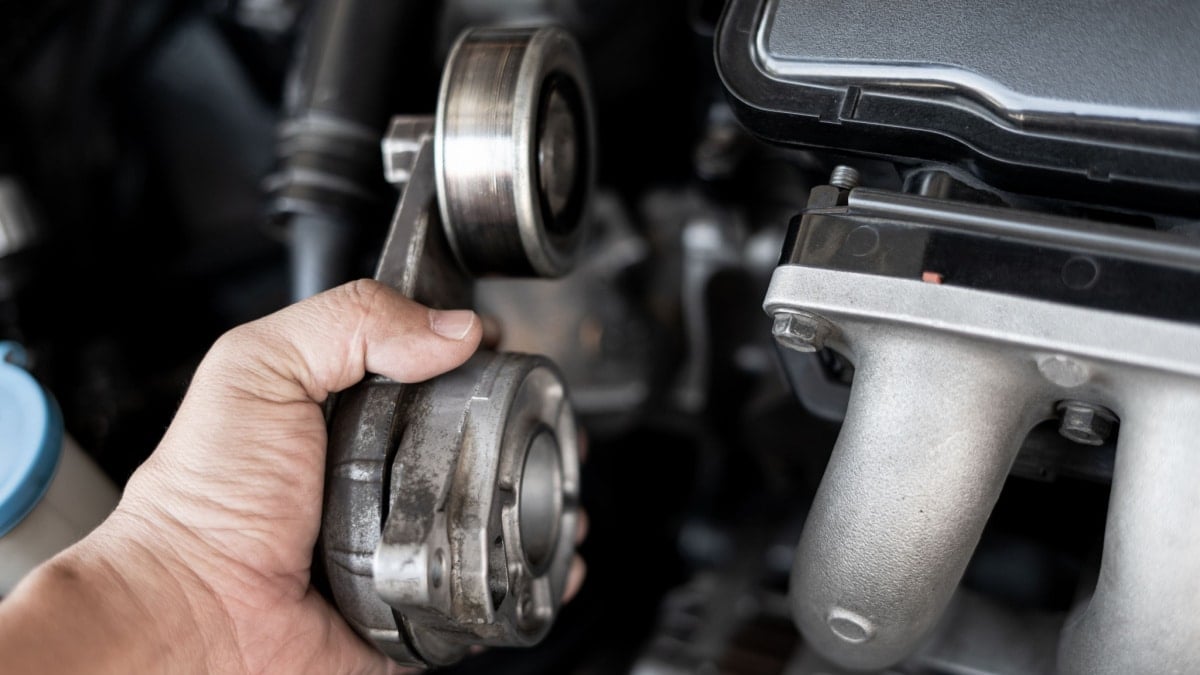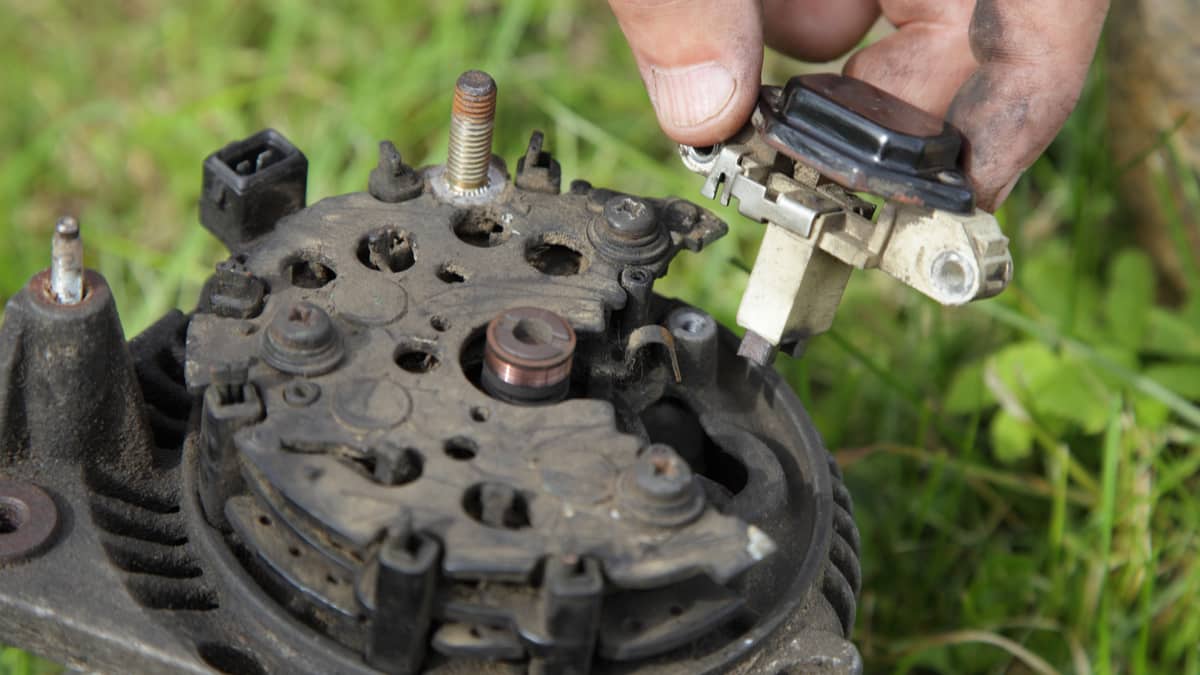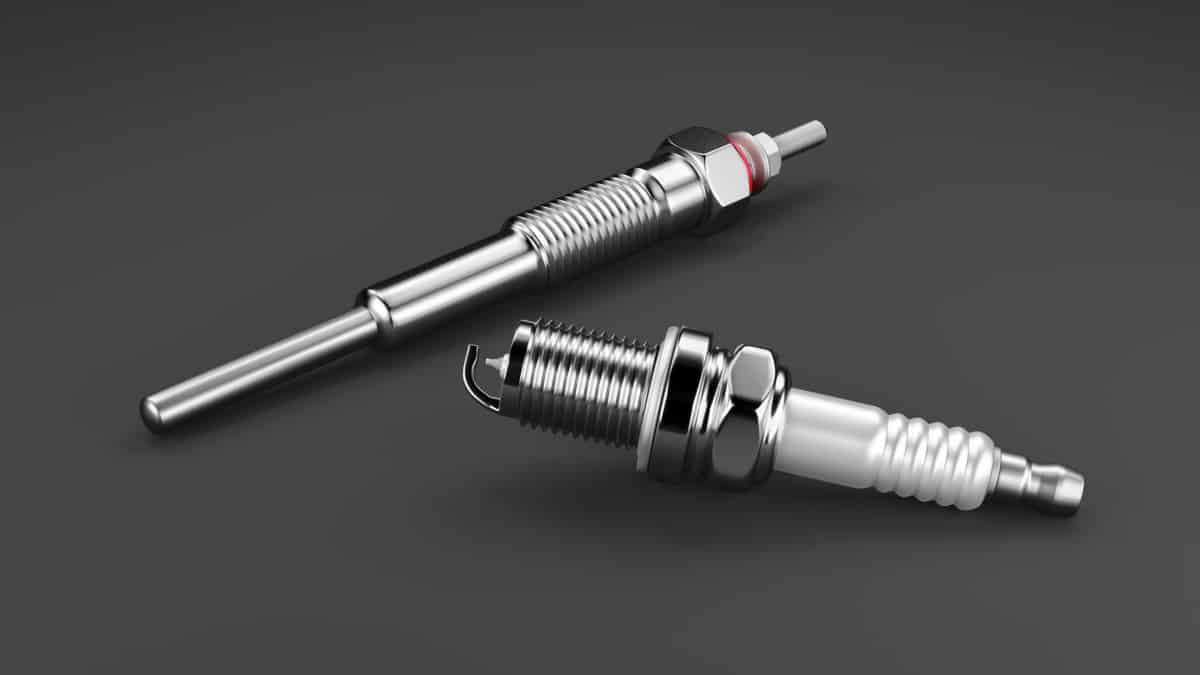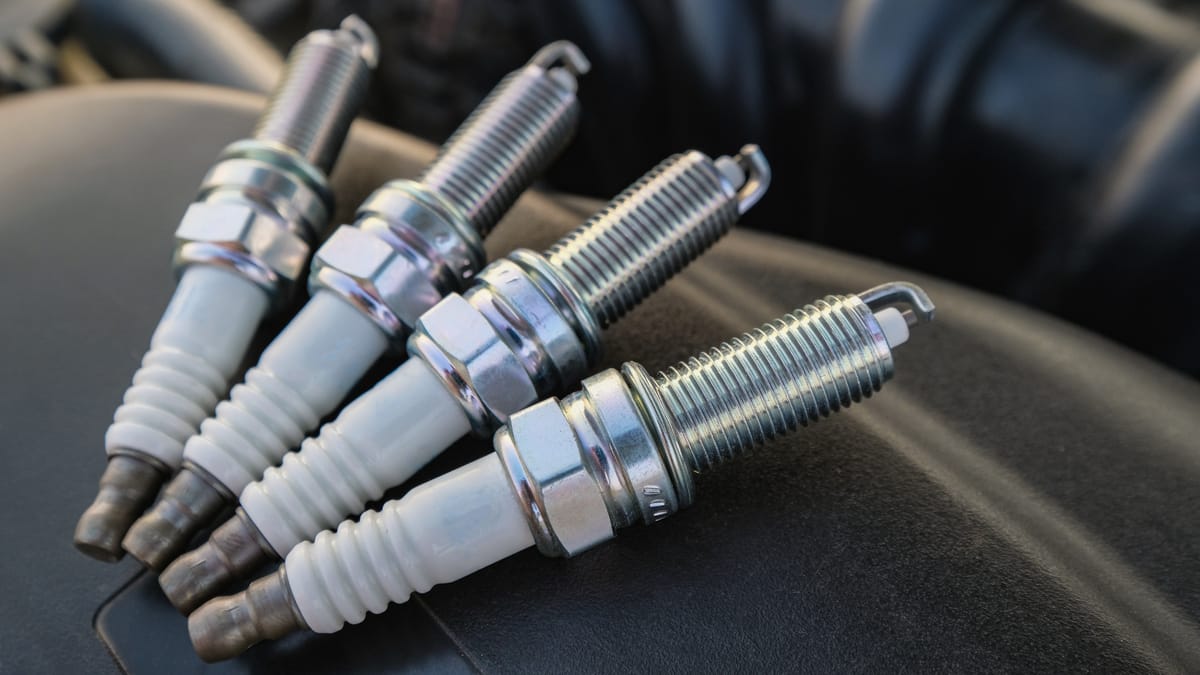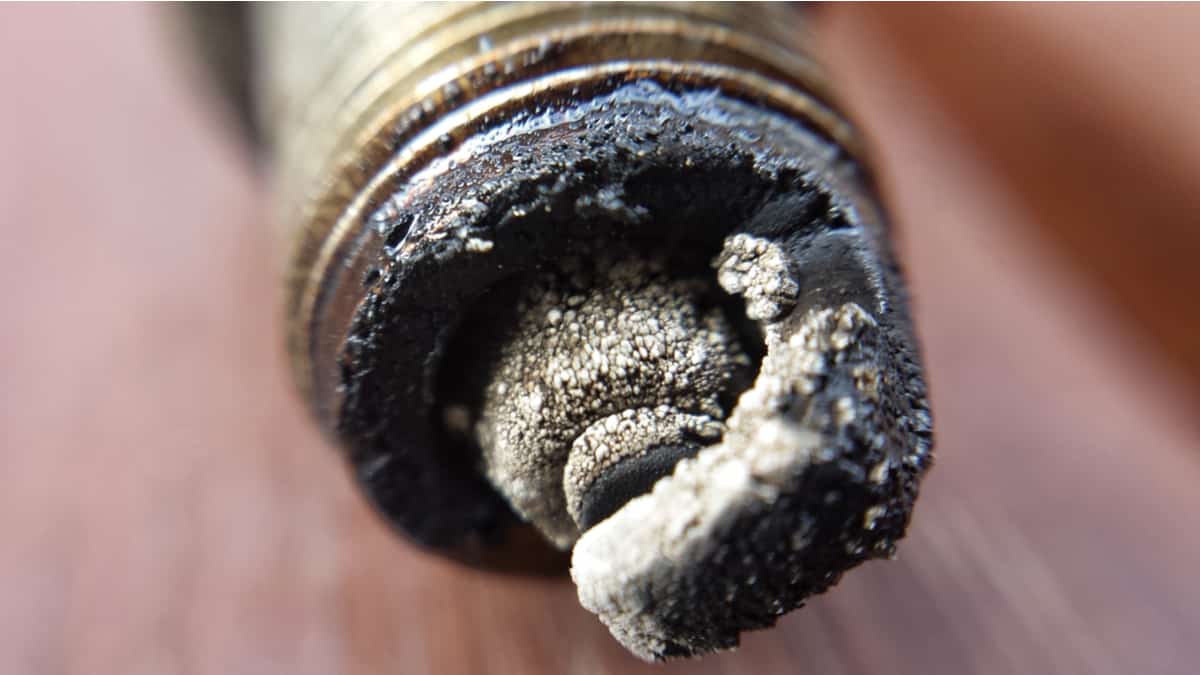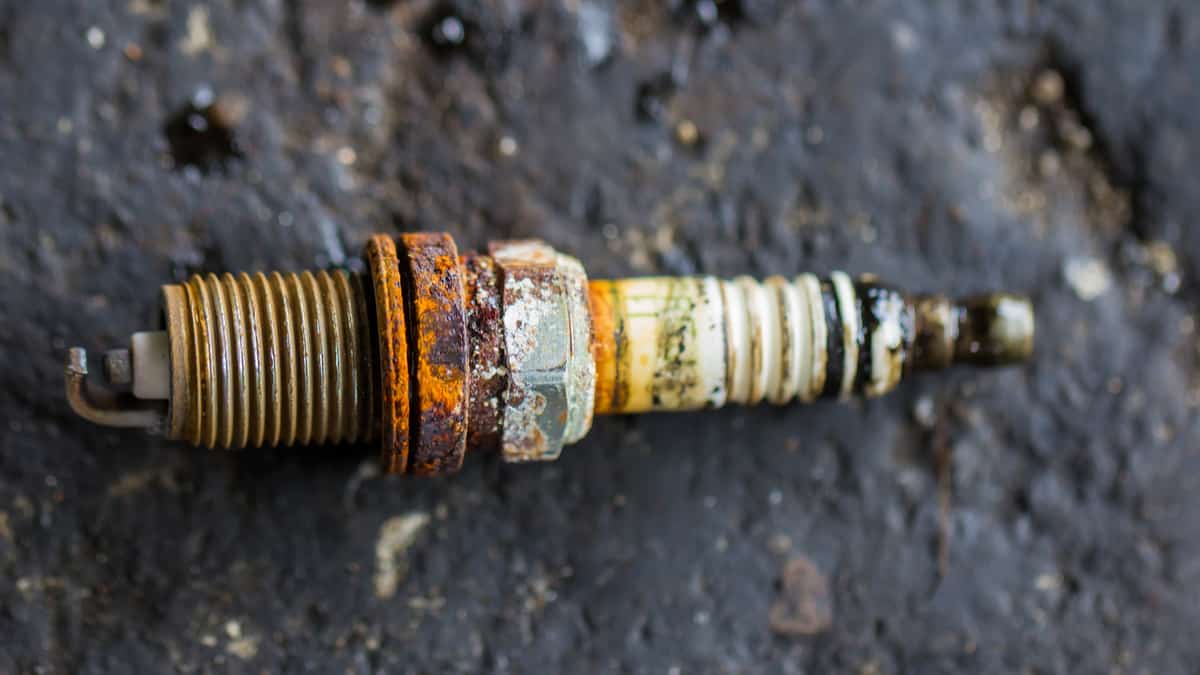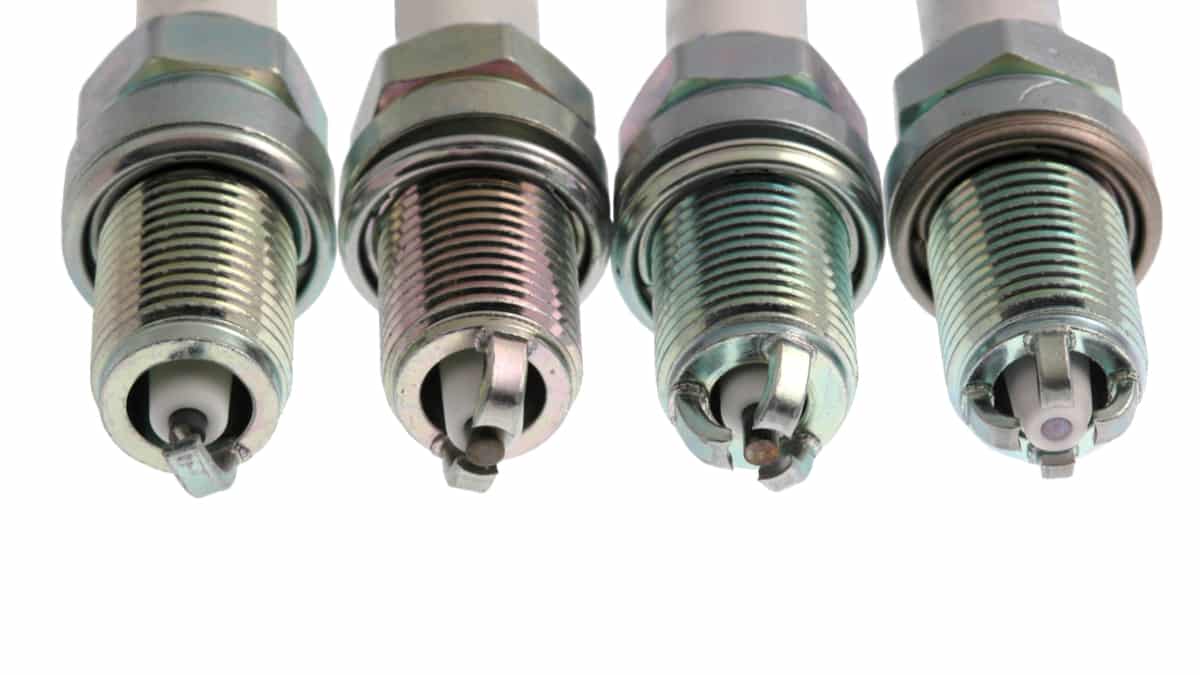Spark plugs are an essential part of the ignition system in a gas-powered car. Replacing them is part of your car’s recommended maintenance schedule, but it’s still helpful to know the most common bad spark plug symptoms.
In this guide, we cover the top symptoms of bad spark plugs. We also explain the function of the spark plugs, show you the location and give you tips to test them. Finally, we end our article with the cost of spark plug replacement and with some answers to your questions.
Symptoms Of Bad Spark Plugs
If the Check Engine Light is flashing, the spark plugs may be bad. Defective plugs can also lead to a misfiring engine, a rough idle, trouble accelerating, a hard-starting engine, decreased fuel economy and exhaust that smells like fuel.
Here are the symptoms that matter the most.
1. Flashing Check Engine Light
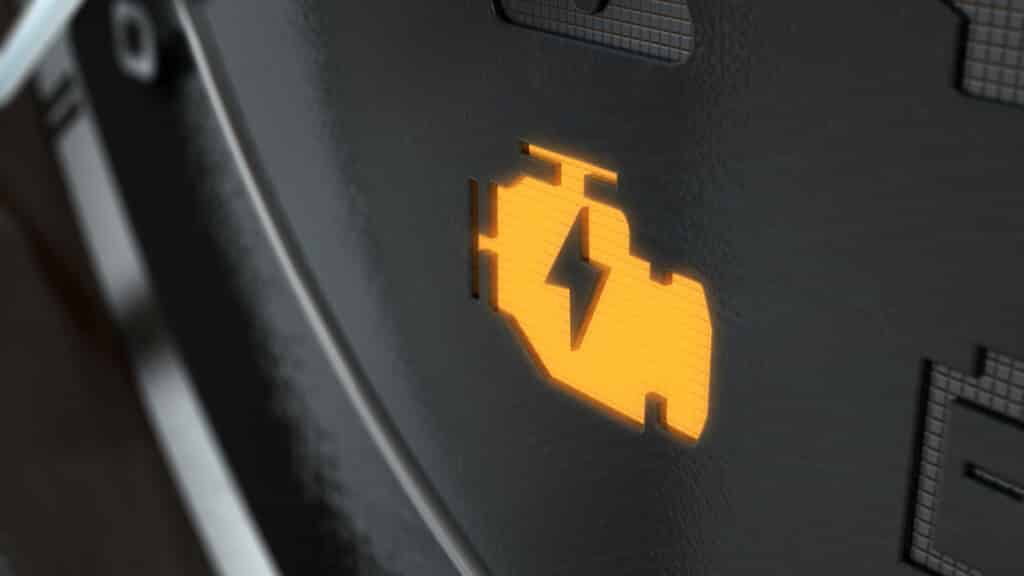
When the spark plugs are bad, the air-fuel mixture may not combust as it should. Therefore, the Check Engine Light will come on when relevant codes are set in the system. The light can also come on if the spark plug becomes contaminated with oil or starts to run too hot.
If the Check Engine Light begins flashing, it may indicate that a spark plug has failed, leaving one or more of the cylinders inoperable. You should stop driving immediately and fix the problem.
Keep in mind that the Check Engine Light comes on for a multitude of problems. You can’t assume that the spark plugs are bad simply based on this warning light. Instead, you need to check the diagnostic trouble codes with your scanner and reference them in our online code library to see what’s going on.
2. Misfiring Engine

A misfiring engine occurs because the ignition system is enduring too much stress. It can occur any time that a sensor fails or if a spark plug is defective.
The misfiring condition creates sputtering and it feels like the engine is struggling to perform. If you allow the engine to continue misfiring, it will lead to further damage.
3. Rough Idle
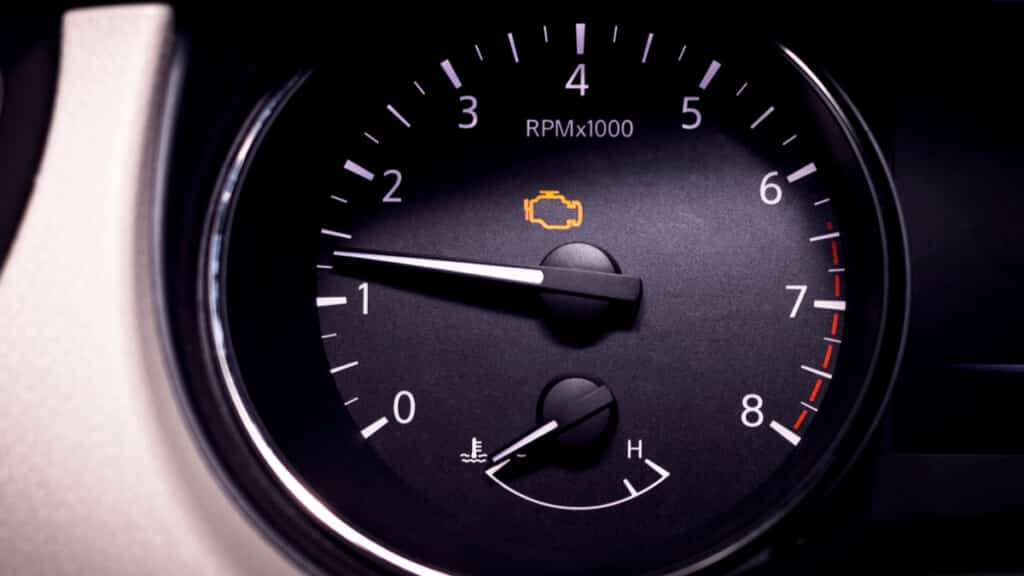
Normal car idle occurs between 600 and 1,000 RPMs. When everything is running as it should, you will see a consistent idle from your car.
However, when the plugs start to fail, the idle becomes rough. You may feel the vibration as the idle gets rougher.
4. Rough Acceleration
As the spark plugs fail, you will notice several issues with the acceleration. The car may seem sluggish when you push on the accelerator pedal. It could also feel rough as the engine tries to push out more power.
Yet, this is another one of those problems that can be due to any ignition system part. It could be due to a defective sensor, a bad ignition coil or something in the fuel system. For that reason, a complete diagnosis is needed before assuming the spark plugs are to blame.
5. Hard-Starting Engine
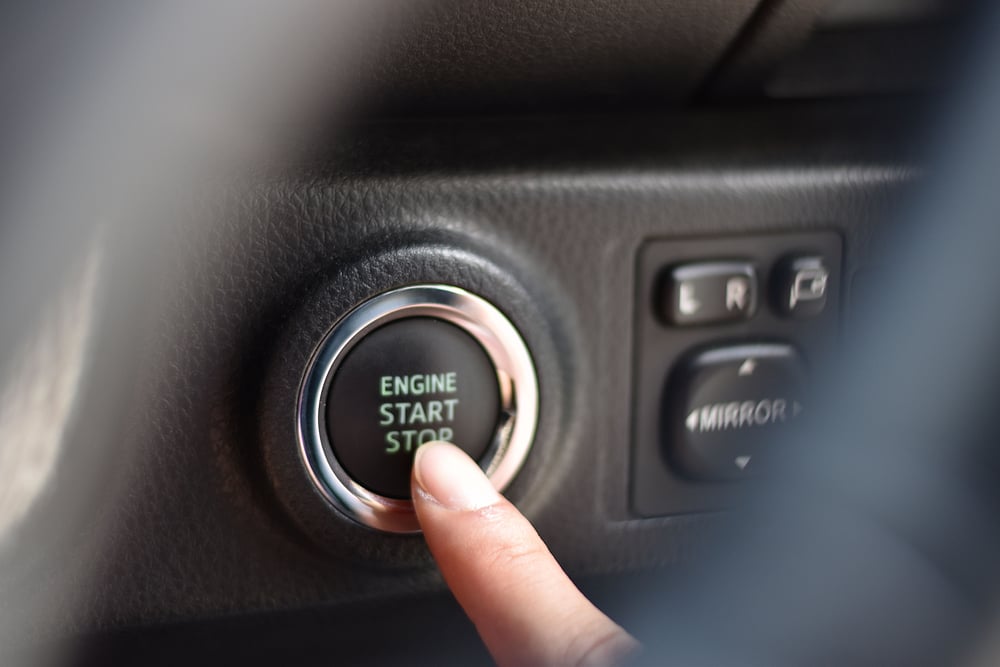
When you think about turning the key in the vehicle and cranking the engine, you may first think of the starter system. While this system is vital, you also need good spark plugs to get the engine going.
If the spark plugs cannot ignite the air-fuel mixture in the cylinders, the engine won’t run. If only one plug is bad, you may still be able to get the engine going, but it’s not going to run smoothly.
6. Bad Fuel Economy

For your car to achieve the EPA-estimated fuel economy, the engine has to be running at optimal levels. Any time that a spark plug is defective, you can expect that the engine is working harder than it needs to.
This added work is going to require more fuel. As a result, you’ll see a drop in the fuel economy until you perform a tune-up and replace the spark plugs.
7. Exhaust Smells Like Gas
When the spark plug doesn’t ignite all of the air-fuel mixture, there will be unburned gas coming out of the system. It’s going to push out the exhaust, causing a strange gas smell.
This smell indicates that there’s either too much fuel or too little air getting through. This problem can also be caused by a bad fuel injector, a defective mass airflow sensor or a clogged air filter.
Spark Plugs Function

Spark plugs have one primary purpose. They are designed to ignite the air-fuel mixture. As electrical energy is transmitted through the spark plug, it jumps the gap at the end to ignite this mixture in the cylinders.
The temperature of the plugs is regulated because if it gets too hot, pre-ignition occurs. On the other hand, if the plugs are too low, fouling occurs. Spark plugs have heat ranges, showing how well it disperses heat.
Where Are The Spark Plugs Located?

Spark plugs are electrical devices fitting in the cylinder head of the internal combustion engine. The spark plug connects to the ignition coil, which generates the voltage needed to make a spark.
The number of spark plugs most engines have is directly related to the cylinders of the car. Usually, there’s one spark plug per cylinder. Therefore, the four-cylinder engine may have four spark plugs, while a V8 could have eight plugs.
The biggest exception to this rule is seen with HEMI engines. These cylinders house two spark plugs each. So, an eight-cylinder HEMI would have 16 spark plugs in total.
Can You Test The Spark Plugs?
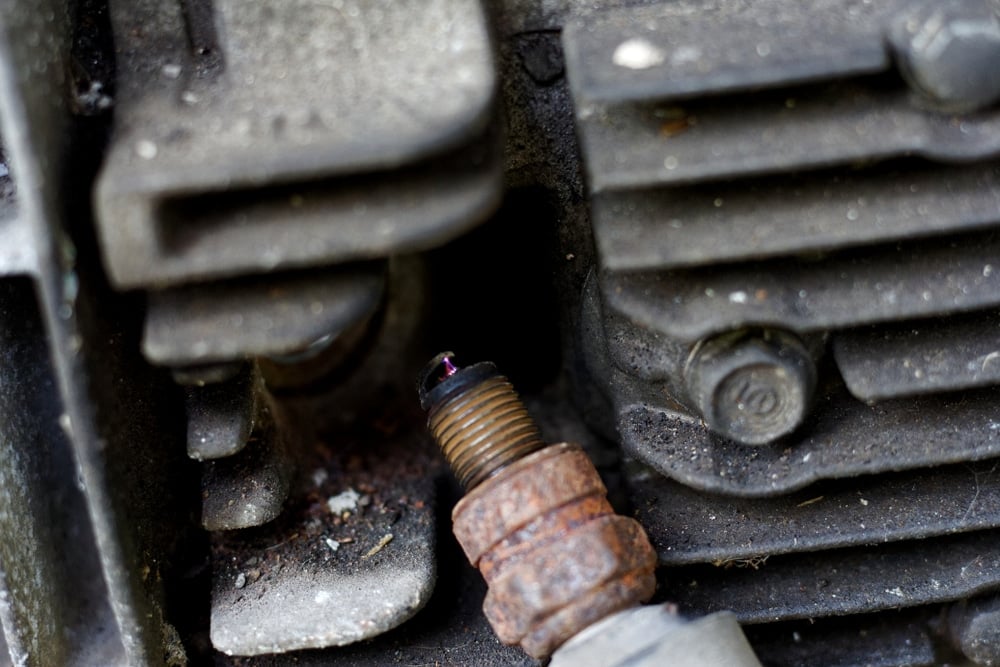
There are multiple ways to check spark plugs to see if they are working. We recommend starting with a visual inspection. When a spark plug is operating normally, it will look similar to when it was put in. If it looks normal with a slight red coating, it simply means that low-quality fuel was used. This shouldn’t be an indication of an engine issue.
Here are a few visual indications of problems:
- Fuel-fouled: shiny coating on the tip and side electrode due to a rich fuel mixture, ignition problems or a low spark plug heat rating
- Detonation damage: shows the engine timing is off
- Worn plug: needs to be replaced
- Carbon fouled: blackened tip and side electrode due to a rich fuel mixture
- Pre-ignition: burned side electrode from running too hot
- White spark plug tip: Lean air-fuel mixture
- Oil ash fouled: caused by worn piston rings and seals
- Mechanical damage: from extending too far into the combustion chamber
There are more advanced ways of checking a spark plug, although most home mechanics aren’t going to travel this route.
Grounding Test Steps
- Pull out the fuse for the car’s fuel pump to cut the supply.
- Run the motor until the fuel is burned out of the system.
- Remove the spark plug from the cylinder head.
- Connect the spark plug to the coil pack.
- Put the spark plug on a surface that’s grounded.
- Crank the ignition while you watch for a spark.
If the spark is blue and strong, it’s fine. If it is dull orange and weak, it’s not strong enough. If there’s no spark at all, the plug needs to be replaced.
Multimeter Test Steps
- Run through steps one to three of the previous section.
- Set your multimeter to ohms.
- Test the resistance between the probes to ensure an accurate reading.
- Test the plugs by touching a lead to the terminal end of the plug and another to the electrode.
Check the reading against the manufacturer’s specs in your service manual. Most of the time, a 4,000 to 8,000 ohms reading is normal.
How Much Does It Cost To Replace The Spark Plugs?
On average, you can expect to spend between $100 and $500 for a spark plug replacement. Spark plugs typically cost $5 to $20 each, depending on what type of car you drive and the quality of plugs you choose. Considering your car may need between four and 16 plugs total, you could spend $20 to $320 just on the parts alone.
If you replace the spark plugs yourself, you won’t owe anything for labor. In some cars, this isn’t a tough job to complete, but there are some cars that have plugs that are difficult to reach.
If you prefer to have a professional perform the spark plug replacement, you may spend $50 to $250 on labor, depending on how many hours it takes. Additionally, the labor rate makes a difference.
If you aren’t comfortable changing your own spark plugs, we recommend taking it to a professional. As mechanics that have performed countless spark plug replacements, we can’t stress enough how costly it becomes if a spark plug breaks off in the cylinder because the job isn’t performed right.
How often should spark plugs be changed?
Many auto manufacturers recommend changing the spark plugs after the first 30,000 miles. However, the optimal replacement schedule depends heavily on what type of spark plugs you use. Some types have a life of up to 100,000 miles or more, often worth paying extra for.
Can I drive with bad spark plugs?
The vehicle may still drive with bad spark plugs, but you shouldn’t continue operating it. With a fouled plug, the engine isn’t running right and the air-fuel mixture doesn’t burn correctly. You could break down anywhere and you are allowing more damage to occur, especially to the catalytic converter.
What do bad spark plugs sound like?
The spark plugs won’t make any strange noise, but the rough-running engine can create noise. It can lead to a strange vibration that is felt throughout the entire cabin. Additionally, if the engine misfires, you are going to hear a loud sound from the motor.
What does a misfire feel like?
A misfire feels like the engine has lost power temporarily. You may notice the hesitation most often when you try to accelerate. It can also create a louder noise as the engine attempts to run normally. Additionally, a misfiring engine reduces fuel economy, causing you to go through more gas.
Are spark plugs easy to change?
The job isn’t as simple as replacing a car battery, but you may be able to do it at home. If the spark plugs are easy to access and you have the right tools, you can change them yourself. However, if the plugs are hard to reach or you are having trouble getting them out, it might be best to visit a mechanic.
Changing the spark plugs is a task that should be done regularly to keep the engine running at its best. You should follow the maintenance schedule offered by the manufacturer to determine how often the plugs should be changed.
You can also change the plugs if you notice any performance issues. If other parts aren’t running as they should, the plugs could fail prematurely. Additionally, running the car with bad plugs can cause other, more costly problems, such as a bad catalytic converter. For that reason, you shouldn’t put off a spark plug replacement when it’s needed.
Categories: Electric, Troubleshooting
